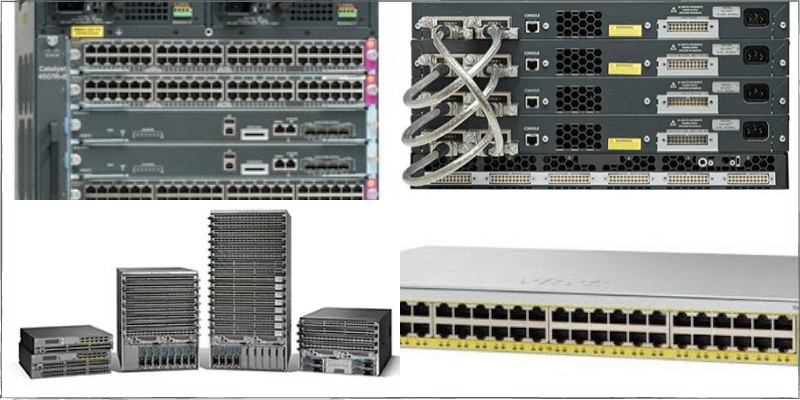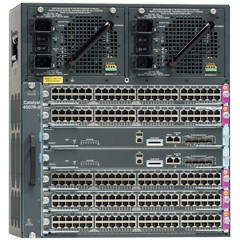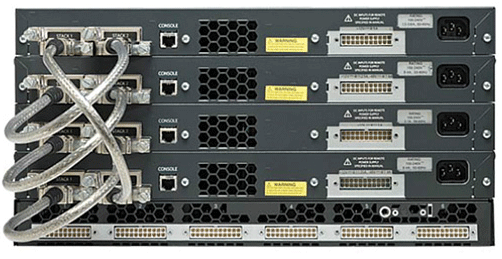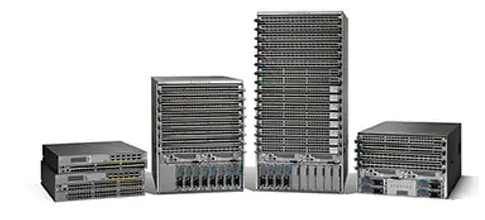Network Switches form the backbone of computer networks and are one of the main building blogs of a Local Area Network (LAN).

A network switch usually operates at Layer 2 of the OSI model (working with the Ethernet protocol) but there are switch models that implement also routing, which can be considered as Layer 3 devices as well (see explanation at the end of this article).
Although switches are nowadays available as software modules in virtualization technologies (such as Vmware NSX etc), the traditional hardware switch with multiple Ethernet ports is still a necessary node in all networks (home, small business, large corporate networks etc).
In this article I will discuss the various types of switches available in the networking field with their characteristics, use cases etc.
If you are an IT professional, a network builder or a business owner, knowing the different types of switches out there will help you select the right solution for your network’s needs.
Let’s start with the various hardware types of switches:
1) Fixed Switches
These are the most popular switches in the market. They come with a fixed number of Ethernet ports (such as 8 Gigabit Ports, 16 ports, 24 ports, 48 ports etc).

Fixed switches can be managed or unmanaged (see the explanation of these two types further below in this article) and can be used in any size of network such as home networks, small business networks, large enterprises etc.
They can have different types of ports (in terms of speed and connectivity options) but nowadays port speeds are usually 1Gbps (at least) and connectivity options are usually electrical wired ports (RJ45) or optical fiber ports.
You can find also fixed switches with much higher speed ports such as 10Gbps or 40Gbps.
Some examples of fixed switches include the Cisco Catalyst 3600 series (for business networks), Ubiquity Unify Switches, Netgear or Linksys switches for small businesses etc.
Use Cases
Fixed switches can be used in any kind of network, from home networks up to large enterprise networks. You need to know the number of network hosts to be connected in order to select a switch with the right number of ports.
If you need to connect more than one fixed switch, you can connect them together with a network cable (such as Cat6 Ethernet cable or fiber optic) and create a trunk port between them.
2) Modular Switches
Unlike the fixed switch type described above, modular switches are expandable by adding extra modules on the chassis for getting additional ports and additional performance.

Usually modular switches come in a big chassis (as shown on the picture) and each plug-in module adds extra switch ports to accommodate additional users in the network.
These types of switches are of course much more expensive than fixed switches and are usually used in large networks.
In most cases they offer also Layer 3 functionality (in addition to Layer 2) so they can be used as routers in a network as well.
Modular switches usually have additional power supplies for redundancy and multiple cooling fans on the chassis.
Use Cases
Modular switches are used in Data Centers and in big enterprise networks. They can segment large LANs into hundreds of VLANs and also can provide Layer 3 inter-VLAN routing as well.
3) Stackable Switches
Stackable switches offer a combination of fixed switch and modular switch. There are some fixed switch models that can be stacked together with other fixed switches of the same model to form a stackable switch unit.

These fixed switches are connected together at the back with a special cable thus can communicate with each other and work as a single switch unit with additional ports. When you manage them, you see all the devices as one switch entity.
For example the Cisco 350X series models can be used either as standalone fixed switches or stacked with other units to form a bigger switch stack entity.
Use Cases
Companies which don’t want to spend so much money on modular switch models, can start with a couple of stackable switches and then expand accordingly as the needs grow.
Stackable switches are more affordable than getting a modular switch chassis.
4) Power over Ethernet (PoE) Switches
All the switches described up to now offer ports for connecting hosts to the network. However, there are some switch types that include also ports that can give both electrical power and network connectivity to hosts.
- 8 Gigabit Ethernet ports
- 8 PoE+ ports with 60W total power budget, and expandable to 123W (with separately purchased power supply module)
- Simple plug-and-play setup with no software to install or configuration needed
Last update on 2024-04-27 at 07:00 / Affiliate links / Images from Amazon Product Advertising API
These are called “Power over Ethernet” switches and as the name suggests they provide also electrical power to connected devices.
PoE switches are very useful to power up remote devices that might not have a power source such as IP phones, remote WiFi routers, wireless Access Points etc.
So, a PoE switch provides both network connectivity (with gigabit ports) plus electrical power through the same physical port.
Use Cases
If you have end-point devices (such as IP phones, wireless access points etc) that are away from a power source (e.g on the ceiling, on remote desks etc) then you can connect them to a PoE switch which will power them up in addition to connecting them to the network.
That way, you only have to run a network ethernet cable without having to worry about power supply to the device.
5) Switches with Optical Fiber Ports
The most popular switch interface is the RJ45 port which connects to a regular ethernet cable (Cat 5, Cat 6, Cat 7 etc). Most switches come with RJ45 ports.

However, in many cases you need to use a fiber optic cable in order to provide connectivity to longer distances than the 100-meter limit of regular ethernet cables.
Switches with Optical Fiber ports are usually equipped with a combination of RJ45 ports plus extra fiber optic ports for connecting to fiber cables. The fiber optic ports are called SFP ports (Small-Form Factor Pluggable). The image above shows a switch with several RJ45 ports and also 4 SFP optical ports at the right of the device.
Usually the fiber optic ports are used to connect to other distant switches either in the same building (on other floors for example) or even in remote buildings over several kilometres apart.
The advantage of fiber cable compared to regular Cat 6/7 cable is that fiber can work over long distances compared to the 100-meter limit of cat6/7 cables.
Use Cases
If you want to connect several switches over long distances, then use a switch with Fiber Optic (SFP) ports.
Now let’s move on to differentiate switches in terms of their software and management capabilities. The following categories exist:
6) Unmanaged Switches
No products found.
Usually low-end SOHO switches (i.e for “Small Office Home Office” environments) are unmanaged switches. This means you just power them up and they are plug-and-play.
There is no management interface via a Graphical interface or command line interface to configure anything on the switch.
These are used only for connecting devices in the same VLAN and for providing pure Layer2 connecting to hosts.
Use Cases
In home networks or small offices that don’t require any fancy network features, i.e in cases where you just need a switch to connect a few network devices (such as desktop computers, network printers, WiFi routers etc).
7) Managed Switches
Unlike the unmanaged switch type above, managed switches are much more flexible with more features.
- ETHERNET PORT CONFIGURATION: 8-port 10/100/1000, 2 x 1G uplinks (SFP)
- CONFIGURATION AND CONTROL: Easy-to-use on-box WebUI, CLI, SNMP, Cisco FindIT Network Manager, PnP, Auto Smartports, auto-discovery, zero-touch deployment
- L2 plus/L3FEATURES: Static routing, QoS, voice/guest VLAN, GVRP, MSTP, IGMP snooping, time-based access control lists
Last update on 2024-04-27 at 07:00 / Affiliate links / Images from Amazon Product Advertising API
You need to have some networking knowledge to configure and manage such a switch, therefore they are mostly used in larger networks or from power users who know how to configure them.
For example, if you want to install a switch which will be a part of a large LAN network with hundreds of users, you must get a managed switch. Thus, you will be able to configure trunk ports, VLANs, Quality of Service, VTP protocols, spanning tree etc.
Use Cases
If you need the greatest flexibility and features, then you must get a managed switch. Especially in larger LAN networks, managed switches are essential to provide all necessary scalability and flexibility in designing a robust and reliable network.
8) Smart Managed Switches
These represent a middle-ground between totally unmanaged switches and managed switches.
- 8 Gigabit Ethernet ports
- 1 x PD port
- Smart software with easy-to-use interface offers managed control for secure setup, access, and SNMP (NMS 300) management. Includes NETGEAR Insight to remotely manage your networks from anywhere.
Last update on 2024-04-27 at 07:00 / Affiliate links / Images from Amazon Product Advertising API
Smart managed switches offer some limited management capabilities whereby you can setup some important and basic features such as VLAN, speed/duplex control, SNMP etc.
However, don’t expect to find all possible configuration options that are offered on full-managed switches.
Use Cases
Can be used in small office or small business environments with low complexity requirements. They can also be used at the edge of larger networks (e.g at remote branch offices).
9) Layer 3 switches
As briefly discussed at the beginning of this article, switches belong to Layer 2 of the OSI model.
They operate at the Data Network layer and their main task is to forward ethernet frames from one port to another as fast as possible.
However, there are some more advanced switches that can also route IP packets just like a network router.
These switches are called Layer 3 switches because they operate at the Network Layer of OSI model.
Actually, a Layer 3 switch is a combination of both a Layer2 and Layer3 device.
Their software is more advanced from pure Layer2 switches and they can run dynamic routing protocols such as RIP, OSPF etc.
If you have a Layer 2 switch with multiple Layer 2 VLANs configured, then routing between these VLANs is not possible from the switch itseld.
However, if you configure VLANs on a Layer3 switch, the device itself can provide also network routing (at IP level) between the VLANs. This is called “inter-vlan routing”.
Use Cases
Layer 3 switches are usually implemented at the core of large networks in star-topologies. In such a topology, a high-performance network Layer 3 switch can be used as the core central switch where other Layer 2 switches (access switches) connect to it from other parts of the LAN network (see example diagram below).

If there is a need of communication between different VLANs in the network, traffic flows from the lower Layer 2 switches through the core Layer 3 switch which routes the packets from one VLAN to another.
10) Data Center Switches
Data Centers have seen explosive growth in recent years. Almost all large companies centralize their IT assets and networks into a few large data centers for better administration, management etc.

Therefore, Data Center switches must support some special characteristics such as very high speed performance, large port capacity, low latency, virtualization support, security, QoS etc.
A perfect example of Data Center switches is the Cisco Nexus line of products. These switches implement perfectly the SDN (Software Defined Network) concept, offer virtualization and programmability etc.
Related Posts
- How Does a Network Switch Learn MAC Addresses?
- How to Find a Device MAC Address on a Cisco Switch (show mac address-table)
- How to Configure a Loopback Interface on Cisco Router & Switch
- Cisco Switch Layer2 Layer3 Design and Configuration
- Description of Switchport Mode Access vs Trunk Modes on Cisco Switches